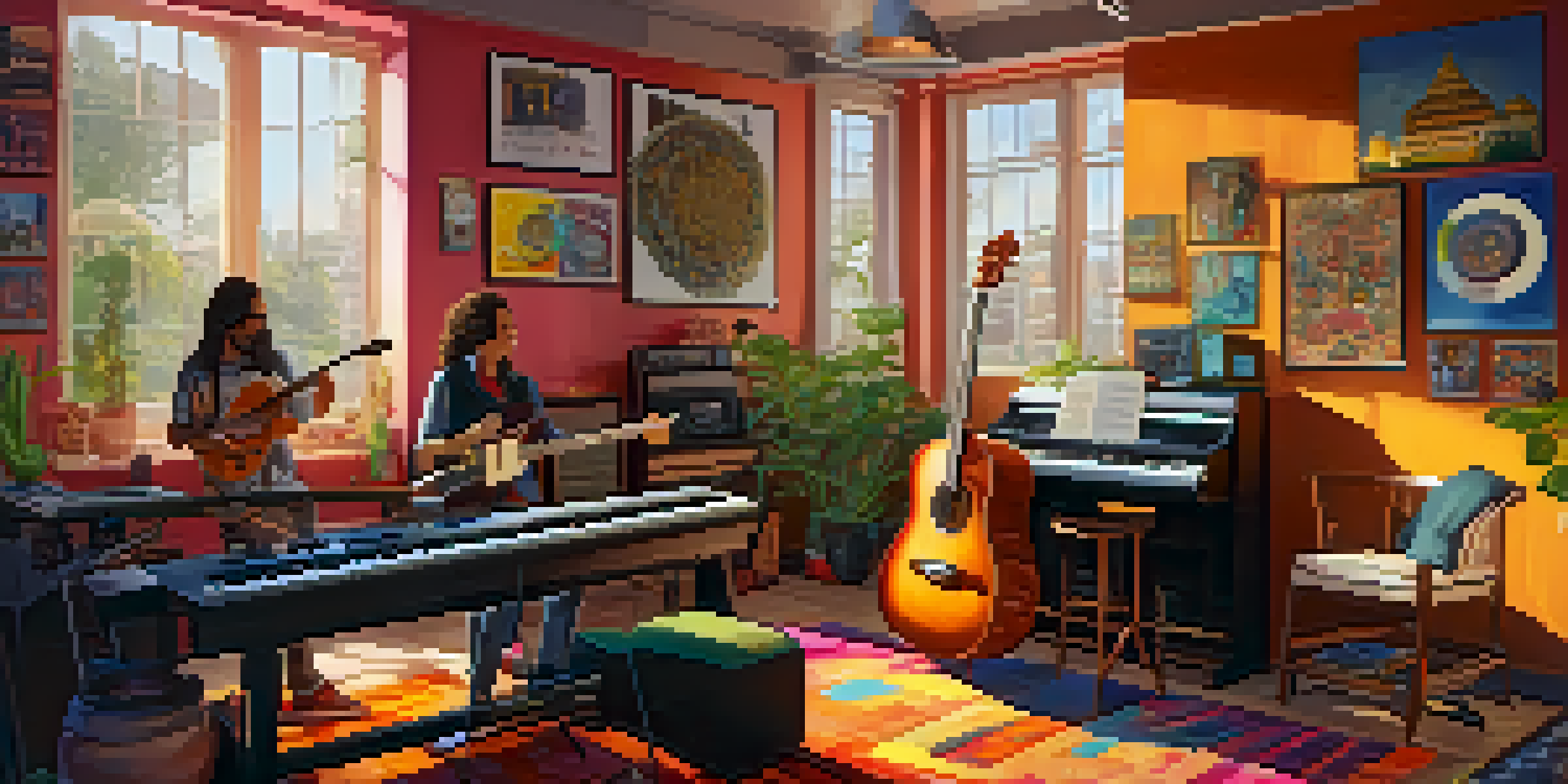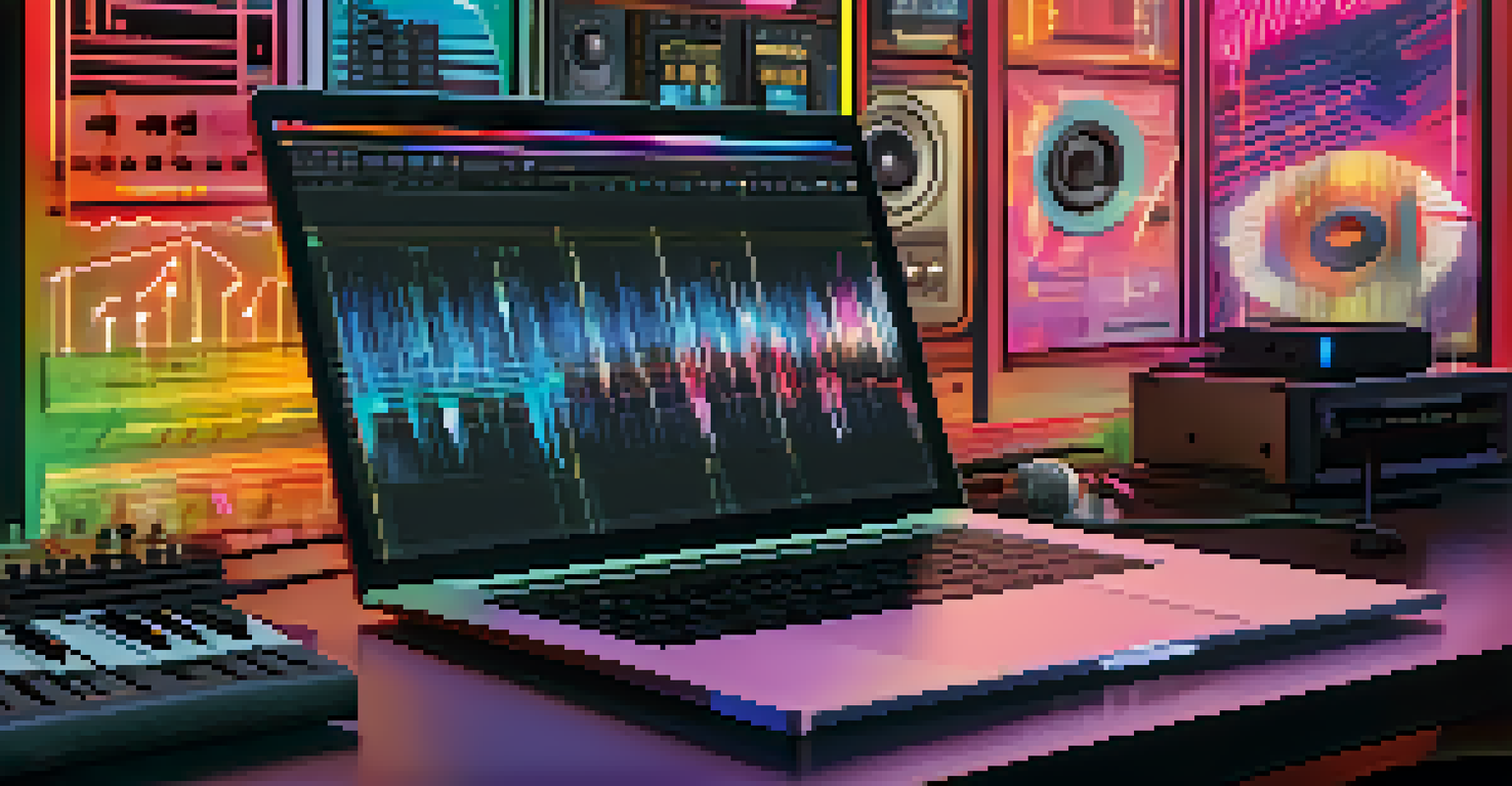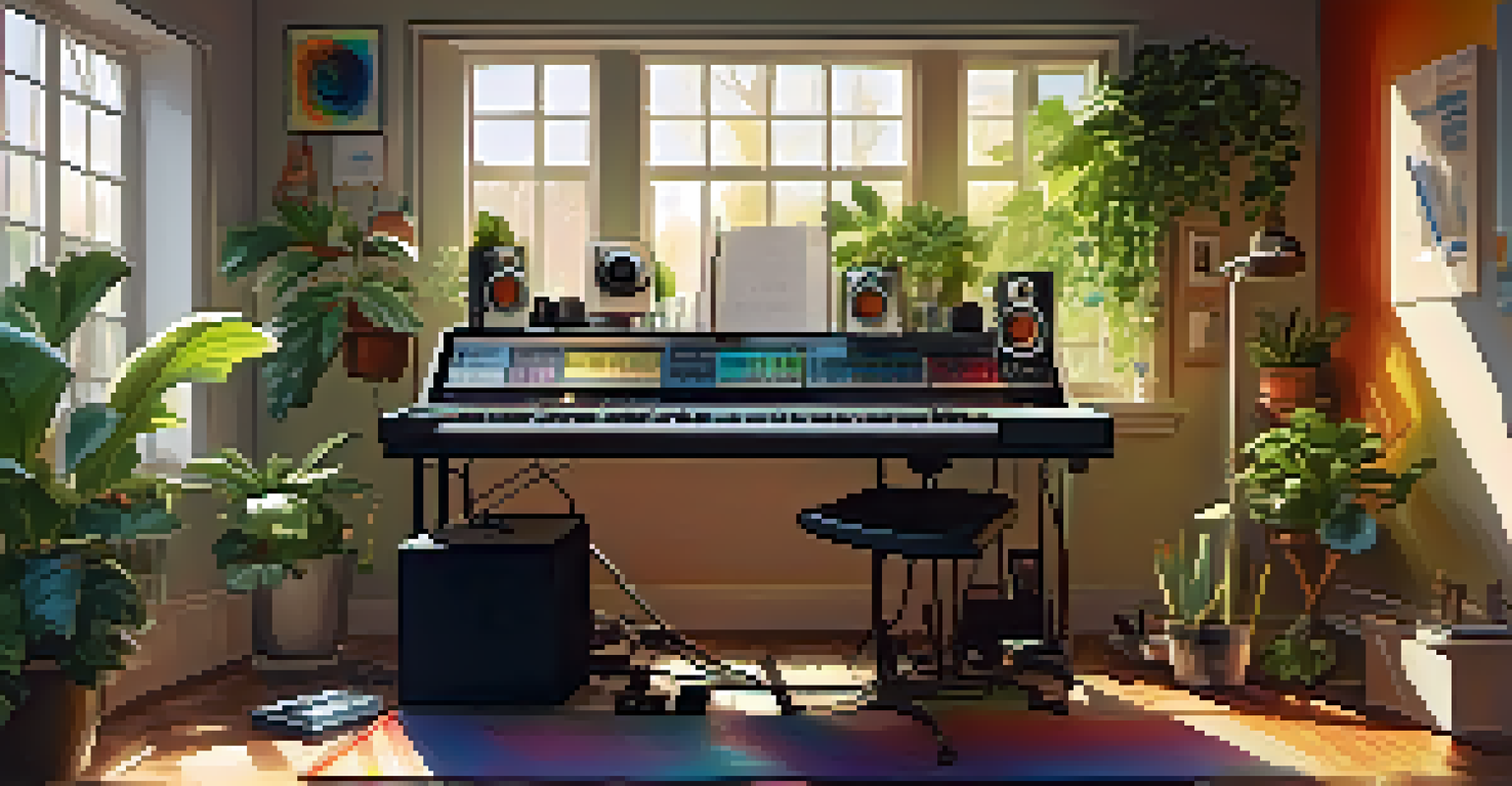Online Collaborations: Enhancing Music Projects Across Borders

The Rise of Online Music Collaborations
In recent years, the music industry has seen a significant shift towards online collaborations. Artists from various corners of the globe can now come together, transcending geographical boundaries to create unique sounds. This rise is largely driven by technological advancements, enabling musicians to share ideas and files instantaneously.
Music is the universal language of mankind.
Imagine a singer in New York teaming up with a producer in Tokyo, each contributing their distinct cultural influences to a single track. The results are often fresh and innovative, allowing for a rich blend of styles that might not have been possible otherwise. These collaborations foster creativity in ways that traditional studio settings might not allow.
Moreover, the COVID-19 pandemic accelerated this trend as artists sought new ways to connect and create while in lockdown. What started as a necessity has evolved into a powerful tool for artistic expression, proving that distance is no longer a barrier to collaboration.
Tools Empowering Global Music Collaboration
The success of online music collaborations is heavily reliant on the tools available to artists. Platforms like Soundtrap, Splice, and BandLab allow musicians to work together in real-time, sharing their creative processes seamlessly. These tools come equipped with features that facilitate everything from recording to mixing, making collaboration feel almost as intimate as being in the same room.

Additionally, cloud storage services like Google Drive and Dropbox enable artists to store and share their work easily. This accessibility means that an artist can send a rough demo to a collaborator halfway around the world, who can then add their touches without missing a beat. It’s like passing a virtual mixtape back and forth until it’s just right.
Global Music Collaborations Surge
Online platforms enable artists worldwide to collaborate, creating innovative music that blends diverse cultural influences.
Furthermore, video conferencing tools like Zoom and Microsoft Teams have become essential for discussing ideas and feedback. These platforms have helped maintain personal connections that enhance the collaborative process, allowing artists to communicate effectively even when they can’t meet face-to-face.
Cultural Exchange Through Music Projects
One of the most enriching aspects of online collaborations is the cultural exchange that occurs. When artists from different backgrounds come together, they not only share their music but also their stories and experiences. This creates a tapestry of sounds that reflects a diverse range of influences, enriching the final product.
Creativity is contagious, pass it on.
For instance, an Afrobeat artist collaborating with a classical musician can result in a groundbreaking piece that fuses rhythmic complexity with orchestral elegance. This blending of genres not only captivates listeners but also promotes understanding and appreciation of different cultures. It’s a beautiful reminder of how music can unite us despite our differences.
Moreover, these collaborations can introduce audiences to new genres and styles they may not have encountered otherwise. As artists share their cultural roots, listeners gain insight into the rich histories behind the music, fostering a greater sense of global community.
Building a Network of Collaborators
Online collaborations also facilitate the creation of extensive networks among musicians. Social media platforms, forums, and dedicated websites allow artists to connect with like-minded individuals who share their passion for music. These connections can lead to fruitful partnerships, opening doors to opportunities that may not have been accessible otherwise.
Think of it as a virtual jam session where artists can showcase their skills and find collaborators who inspire them. Whether it’s through sharing snippets of work on Instagram or posting collaboration requests on forums, these interactions are crucial in building a supportive musical community. The more connections an artist makes, the more avenues they have for creative expression.
Social Media Fuels Artist Connections
Social media acts as a powerful tool for musicians to showcase their work and find potential collaborators across the globe.
Additionally, many artists have found success by collaborating with others in their networks, leading to increased visibility and exposure. This interconnectedness not only enhances their artistry but also broadens their audience reach, creating a win-win situation for everyone involved.
Challenges of Remote Collaborations
Despite the many advantages, online collaborations come with their own set of challenges. Time zones can pose a significant hurdle, making scheduling sessions tricky for artists in different parts of the world. What might be a convenient time for one artist could be the middle of the night for another, requiring flexibility and patience.
Moreover, technical issues can arise, such as poor internet connectivity or software glitches, which can disrupt the flow of collaboration. These hurdles can be frustrating, especially when artists are excited to share their ideas. However, overcoming these challenges often leads to innovative solutions, pushing artists to become more adaptable and resourceful.
Communication can also be a barrier, particularly when artists have different visions or working styles. This is where clear dialogue becomes essential, as discussing expectations and being open to compromise can help mitigate misunderstandings. In the end, the process can lead to stronger partnerships as artists learn to navigate these challenges together.
The Role of Social Media in Music Collaborations
Social media plays a pivotal role in facilitating online music collaborations. Platforms like Instagram, TikTok, and Twitter allow artists to showcase their work and reach potential collaborators across the globe. By sharing snippets of their projects or engaging with followers, musicians can attract attention and find like-minded partners eager to collaborate.
For example, a TikTok challenge can spark a worldwide trend, prompting artists from different countries to contribute their versions of a song. These moments of viral engagement not only boost an artist's visibility but also create a sense of community and shared purpose among those participating. It's a modern-day digital jam session that can lead to unexpected and exciting collaborations.
Challenges in Remote Collaborations
Artists face hurdles like time zones and technical issues in online collaborations, requiring adaptability and clear communication.
Moreover, social media allows for immediate feedback from audiences, which can be invaluable for artists refining their projects. This real-time interaction fosters a sense of accountability and encouragement, helping musicians feel supported as they navigate their creative journeys.
Future Trends in Online Music Collaborations
As technology continues to evolve, the landscape of online music collaborations is bound to change. With advancements in virtual reality and immersive experiences, we could see artists collaborating in virtual spaces, simulating the feeling of being in a studio together. This could revolutionize the way musicians interact, making collaborations even more dynamic and engaging.
Additionally, artificial intelligence (AI) is beginning to play a role in music creation, offering tools that can assist artists in generating ideas and composing music. While some may view this as a threat, it can actually serve as a valuable resource for inspiration, allowing artists to experiment with new sounds and techniques that they might not have considered before.

Ultimately, the future of online collaborations looks promising, with endless possibilities for creativity and innovation. As artists continue to embrace these new technologies, we can expect to see exciting collaborations that push the boundaries of music and bring diverse voices to the forefront.